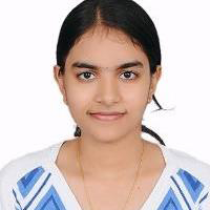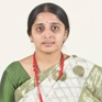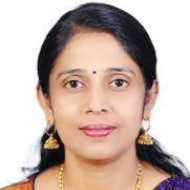International Journal of Engineering and Manufacturing (IJEM)
IJEM Vol. 15, No. 3, 8 Jun. 2025
Cover page and Table of Contents: PDF (size: 920KB)
Medical Image Synthesis Using Variational Autoencoder and Generative Adversarial Networks
PDF (920KB), PP.56-68
Views: 0 Downloads: 0
Author(s)
Index Terms
Medical image synthesis, VAE, GAN, Hybrid model, Data augmentation, Healthcare applications
Abstract
Nowadays, image synthesis has become essential in the medical field for lever- aging deep learning technique to improve decision- making. Our proposed research work combines Variational Autoencoders (VAEs) and Generative Adversarial Networks (GANs) to synthesize medical im- ages, enhancing diagnostics, medical training, and image analysis. The model presented combines a Discriminator, and a Variational Autoencoder to capitalize on the strengths of both VAEs and GANs. The Decoder is tasked with generating synthetic medical images, the Discriminator evaluates their distinguishing factor, and the VAE learns a probabilistic mapping from input to latent space, ensuring a structured representation of underlying medical features. The training process involves a decoder creating realistic medical images, a discriminator distinguishing real from synthetic ones, and a VAE capturing meaningful data variations in the latent space. Verified on the dataset sourced from the Kaggle. The model refines its parameters iteratively using a training loop, resulting in enhanced quality and variety of generated medical images. The proposed VAE- GAN model demonstrates its efficacy by generating diverse and realistic medical images. The structured latent space contributes to interpretability, making the images suitable for purposes like data augmentation, anomaly detection, and machine learning model training.
Cite This Paper
Sinchana Ganesh, Madhushree B., Sowmya K. N., H. R. Chennamma, "Medical Image Synthesis Using Variational Autoencoder and Generative Adversarial Networks", International Journal of Engineering and Manufacturing (IJEM), Vol.15, No.3, pp. 56-68, 2025. DOI:10.5815/ijem.2025.03.05
Reference
[1]Krizhevsky A, Sutskever I, Hinton GE. ImageNet classification with deep convolutional neural networks. Communications of the ACM. 2017 May 24;60(6):84-90.
[2]Jia Y, Shelhamer E, Donahue J, Karayev S, Long J, Girshick R, Guadarrama S, Darrell T. Caffe: Convolutional architecture for fast feature embedding. InProceedings of the 22nd ACM international conference on Multimedia 2014 Nov 3 (pp. 675-678).
[3]Goodfellow I, Pouget-Abadie J, Mirza M, Xu B, Warde-Farley D, Ozair S, Courville A, Bengio Y. Generative adversarial nets. Advances in neural information processing systems. 2014;27.
[4]Radford A, Metz L, Chintala S. Unsupervised representation learning with deep convolutional generative adversarial networks. arXiv preprint arXiv:1511.06434. 2015 Nov 19.
[5]Kingma DP, Welling M. Auto-encoding variational bayes. arXiv preprint arXiv:1312.6114. 2013 Dec 20.
[6]Kingma DP, Mohamed S, Jimenez Rezende D, Welling M. Semi-supervised learning with deep generative models. Advances in neural information processing systems. 2014;27.
[7]Larsen AB, Sønderby SK, Larochelle H, Winther O. Autoencoding beyond pixels using a learned similarity metric. InInternational conference on machine learning 2016 Jun 11 (pp. 1558-1566). PMLR.
[8]Arjovsky M, Bottou L. Towards principled methods for training generative adversarial networks. arXiv preprint arXiv:1701.04862. 2017 Jan 17.
[9]Rguibi Z, Hajami A, Zitouni D, Maleh Y, Elqaraoui A. Medical variational autoencoder and generative adversarial network for medical imaging. Indonesian Journal of Electrical Engineering and Computer Science. 2023 Oct;32(1):494-505.
[10]https://www.kaggle.com/datasets/sinchanaganesh/crx-dataset
[11]Ren Z, Stella XY, Whitney D. Controllable medical image generation via GAN. J. Percept. Imaging. 2022 Mar 1;5:000502-1.
[12]Ledig C, Theis L, Husza´r F, Caballero J, Cunningham A, Acosta A, Aitken A, Tejani A, Totz J, Wang Z, Shi W. Photo-realistic single image super-resolution using a generative adversarial network. InProceedings of the IEEE conference on computer vision and pattern recognition 2017 (pp. 4681-4690).
[13]Dittimi TV, Suen CY. Single image super-resolution for medical image applications. InInternational Conference on Pattern Recog- nition and Artificial Intelligence 2020 Oct 9 (pp. 660-666). Cham: Springer International Publishing.
[14]Jiang M, Zhi M, Wei L, Yang X, Zhang J, Li Y, Wang P, Huang J, Yang G. FA-GAN: Fused attentive generative adversarial networks for MRI image super-resolution. Computerized Medical Imaging and Graphics. 2021 Sep 1;92:101969.



